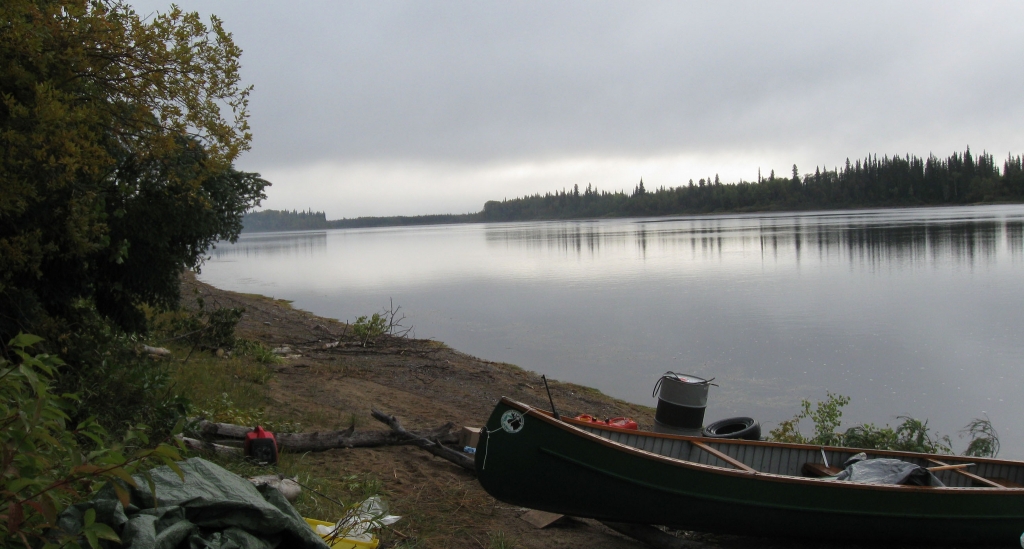The people of Neskantaga have been telling Ring of Fire companies for years that the place where industry wants to build a bridge over the Attawapiskat River is an important cultural location containing sacred burial sites.
Now an archeologist has backed up the First Nation’s assertion that the river crossing has been a crucial gathering place and site of an old village.
Scott Hamilton, a professor in Lakehead University’s department of anthropology, visited the location in September to conduct a surface examination.
It was quickly apparent to Hamilton that the site was used often over the past century, up until at least the 1970s. He found “evidence of occupation” including log tent frames, five gallon barrels cut into stoves and hide stretching racks.
Hamilton also found a short section of a metal pipe that he speculated could be the remains of a musket rifle dating back to the days of northern Ontario’s fur trade.
“It is a place of high archeological potential,” Hamilton said. “Having the amount of traditional knowledge about the site as exists in the community greatly amplifies the context of who was there and what families used the site.”
The site is located along a long stretch of rapids on the Attawapiskat River, on a natural ridge of bedrock.
Hamilton said the archeological evidence seen on the surface, combined with traditional knowledge of Neskantaga Elders and the natural features of the landscape, means there is a high likelihood that the area was a place of “repeated use.”
“If it was repeatedly used as a gathering place, there is a higher probability that during occupations there will be people who die and are buried (in the area),” Hamilton said.
Canada Chrome Corporation (CCC) owns mining leases in the area, stretching across the Attawapiskat River north to the proposed Ring of Fire. Cliffs Resources is trying to obtain those leases so it can build a road along the route connecting its Ring of Fire chromite mine to highway 11.
Hamilton said it is no coincidence that plans for the road run through an area traditionally used as a gathering place.
He said the landscape criteria for road building, such as higher elevation and bedrock close to the surface, often coincides with places people would have always used. There is the possibility of other traditional use places along the esker that Cliffs wants to use to build its road, he speculated.
Generally the responsibility for doing archeological exploration falls to the proponent of a project during the environmental assessment process, Hamilton explained. So if Cliffs does decided to build a road to the Ring of Fire through the site, it would be up to the company to have the area surveyed.
In the meantime Neskantaga is using site visits such as Hamilton’s to ensure that the community’s values are documented, in anticipation of further development in the area.
Neskantaga Chief Peter Moonias has stated he is willing to die to prevent a bridge from being built over the Attawapiskat River. He has repeatedly cited the sacred burial sites in the area as reason to stop the transportation corridor.
Gold has arrived.










Gold has arrived. Here in the north of Ontario we see vast streams of gold shimmering across the landscape as autumn is here and the the leaves are turning...
I am the product, evolution of many thousands of years as are you. I grew up on the land in the remote far north of Ontario following in the footsteps of my...